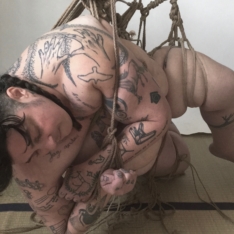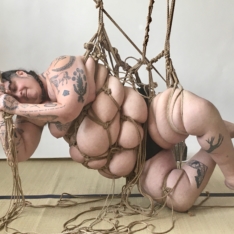Rehearsing our way into the air. With Liz Rosenfeld for the exhibition opening
‘Fossil Experience’ at Großer Wasserspeicher/Pratergallerie.
Berlin
Shibari class September
September 13th, 2022
The course Beginner with Previous Experience is directed at learning the basics of Shibari/Kinbaku technique. We start systematically with efficient handling of body, rope, and safety principles (knots, wrapping and friction). The material contains a wide range of harnesses for floor work. Understanding restriction from the models perspective, and the complex skill set of the rigger, to create erotic phantasies or a meditative tie.
For more information and workshops please scroll up.
Shibari Class July

July 19th, 2022
Because of a Corona infection the workshop will be postponed by one week to Tuesday July 26th!!
The course Beginner with Previous Experience is directed at learning the basics of Shibari/Kinbaku technique. We start systematically with efficient handling of body, rope, and safety principles (knots, wrapping and friction). The material contains a wide range of harnesses for floor work. Understanding restriction from the models perspective, and the complex skill set of the rigger, to create erotic phantasies or a meditative tie.
Shibari Classes
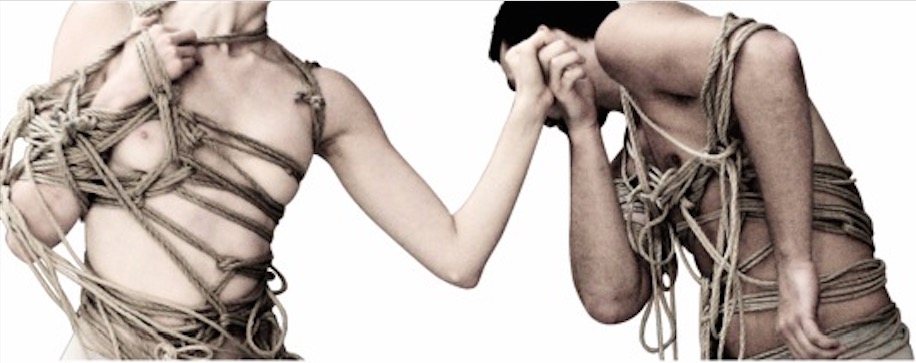
super nice seeing some of you and tying together again!
There are three dates in October, please check that the first and last date we will start one hour later:
Tue 26.10. at 7pm
vaccinated/tested.
‘Creamcake’ is coming up
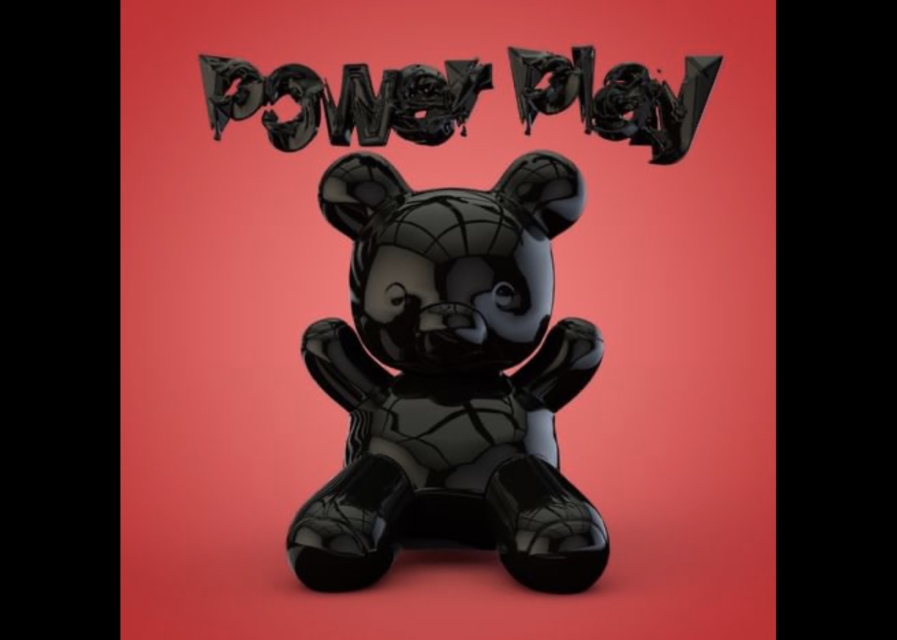
Looking much forward to start rehearsing with Gestalta for a show at Creamcake’s 3HD Festival.
Neoliberal digital society is permeated by power and violence. These structures and dynamics required to survive in capital-oriented societies can be counter-read in abstract form with sadomasochistic practices. Now in it’s seventh edition, Creamcake’s 3hd Festival approaches the transgressive phenomenon of contemporary BDSM, kink and its varieties of exercises in force and control through art, music, performance and film. This year’s “Power Play”—running from October 2 to 10, and happening at various venues across Berlin and on the internet—considers the perception of a sexuality that defines itself as ‘play’. That is specifically in relation to notions of dominance and submission as socially-negotiable within sadomasochistic cultural techniques.
Thank You For Your Effort..
Preparing ropes for the overture of Liz Rosenfeld’s and Rodrigo Garcia Alves’ current project at Sophiensaele.
DANCE/PERFORMANCE
This hospice is a dune, a neighborhood, an ocean, a meal, a club, an orgy, a cinema, a cruising ground, a long flight, and a lifelong embrace. This hospice is us, them, ours, no ones and yours. This hospice is unknown, and will continue to change.
In their first duet for the stage, Rodrigo Garcia Alves and Liz Rosenfeld explore their desire to understand and create their future hospice together. For this, they drag objects, stories, projections, fantasies, and experiments crafting future worlds for each other through experimental dance, text and video practices. Hailing from Brazil and the United States, Rodrigo Garcia Alves and Liz Rosenfeld met in Berlin almost a decade ago, and began to collaborate in their desires, experiences and stories connected to a queer position on death, dying, end-of-life care. What are the possibilities during this period of life regarding support for queer kin and families who are not related? How do we want to be seen and perceived in this vulnerable phase of life?
Together, they expanded these questions and met with different kinds of artistic practitioners who work with death in both pragmatic and creative ways: a palliative doctor, a death doula, a choir director, a bondage expert and a tattoo healer, among others. From these conversations Rodrigo Garcia Alves und Liz Rosenfeld have built their current hospice, this duet for the present.
PERFORMERS, CONCEPT AND DIRECTION Liz Rosenfeld & Rodrigo Garcia Alves ORIGINAL MUSIC Colin Self LIGHT DESIGN Catalina Fernández COSTUMES AND SET DESIGN Cardo Matos DRAMATURGY Season Butler ARTISTIC ADVISORY Valerie Renay PROP-MAKING Clarisse Canela SEAMSTRESS Dores Maués ARTISTIC ASSISTANCE An*dre Neely BONDAGE EXPERT Dasniya Sommer ARTISTIC SUPPORT/ HOSPICE DOCTOR Christian Küllmei ARTISTIC SUPPORT/PRODUCTION Maicyra Leão VIDEOGRAPHERS TINT Collective PRODUCER Joseph Wegmann
Intuitive Session August
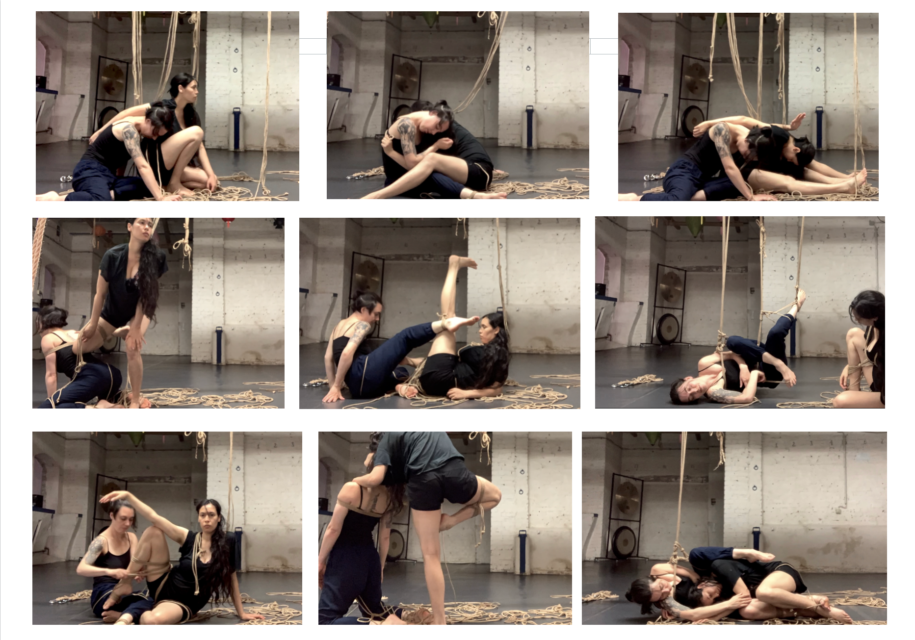
Stills aus dem letzten Instagram-Podcast im Rahmen des Dis-Tanzen-Solo Programms. Ganz herzlichen Dank an den Dachverband Tanz Deutschland e.V. für den Support meiner choreografischen Recherche.
August:
Zwei Tetriskörper auf der Suche nach Schnittstellen zwischen Movement, Shibari-Partnering und Restriktion als Supportmechanismus. Als offene Session angelegt und mit angedeuteten Laban-Tools startend, tunen wir ein. Erst formal, mit self-touching tools und visualisierten Kuben, die uns räumliche Orientierung geben. Dabei nähern wir uns raupenartig und verzwirbeln neugierig unsere Peripherien. Alles läuft tastend ab, auch wenn die Außenperspektive, die Insta-Kamera nicht ganz wegzudenken ist.
Hier und da entstehen Nähemomente. Wir docken an. Skin contact, die Atmung des anderen, eine Mischung aus Deo und kühlem Kippenrauch umgeben unser minimalistisches Partnering. Körper schieben sich durch Korridore abstrakter Umarmungen, wobei das Bewegungsmaterial, unsere couple-Skulptur, zunächst durchweg Shibari geprägt ist. Haben wir beide doch lange als (Bondage-) Modelle gearbeitet und drüber gebrütet, um Details wie Fußstellung, Blick, Torso-Torsionen klassisch zu verinnerlichen. Deeply enscribed into our muscle memory (and not only muscle ;).
Ich versuche diese Habits zu unterbrechen. Schiebe tanzmäßiges ein, gucke in den Raum, raus aus der rituellen Bondageblase, in die Linse, und versuche meine Aufmerksamkeit zwischen Intimitäs-energy, Hingabe ins Seil und performativen Abstand zu balancieren.
Alles in Zeitlupengeschwindigkeit. Emotionale Akzente und Dynamik kommen dazu, wenn wir vertrauter sind. Manchmal blitzen spielerische Powermomente auf, von denen ich mir mehr wünsche.
Am schwierigsten hinzukriegen sind organische Wechsel zwischen Tanz- und Fessel-Timing. Wir versuchen gar nichts zu kaschieren. Für den Moment ist Fesseln Fesseln und moven moven. Gefesselt moven hat nochmal eine andere Zeitlichkeit. Und hier kommt der Partner* auch als Hilfsmittel (Hilfsobjekt-Subjekt) ins Spiel. Ganz technisch:
– Wie räumliche Ebenenwechsel mit verknoteten Gliedern bewerkstelligen?
– Warum überhaupt den Partner* mit wenigen Handgriffen in die Luft schwingen?
– Wann einfach loslassen und sich zum Passiv-Tanzen anbieten?
In den nächsten Sessions bauen wir daraus einen Mix aus lückenhaftem Ineinander und Verabredungen für kleine Soli auf Distanz. Und obwohl unsere Körper schon längst komplex kommunizieren, brauchen wir viele Wiederholungen, wie ja meistens im Tanz. Weil ‘Choreografie schreiben’, also Bewegungen schreiben, eben so dauert. Weil Körper langsam sind, aber über Zeit und mit spielerischen Ansätzen mega cool formbar und aufnahmefähig bleiben.
Dank an Gestalta für die schönen Proben und ans Karada House!
„Gefördert durch die Beauftragte der Bundesregierung für Kultur und Medien im Programm NEUSTART KULTUR, [Hilfsprogramm DIS-TANZEN/ tanz:digital/ DIS-TANZ-START] des Dachverband Tanz Deutschland.“

Intuitive Session July

Stills aus der Bewegungsrecherche im Rahmen des Dis-Tanzen-Solo Programms. Herzlichen Dank an den Dachverband Tanz Deutschland e.V. für den Support meiner choreografischen Recherche.
Im Juli mit Gestalta-Hannah Judd, Seilen, Steinen und Semi-suspension.
Live podcast: Mittwoch 7. 7. 2021, 16 Uhr, IG: @Dasniya_Sommer
„Gefördert durch die Beauftragte der Bundesregierung für Kultur und Medien im Programm NEUSTART KULTUR, [Hilfsprogramm DIS-TANZEN/ tanz:digital/ DIS-TANZ-START] des Dachverband Tanz Deutschland.“

Shibari Classes
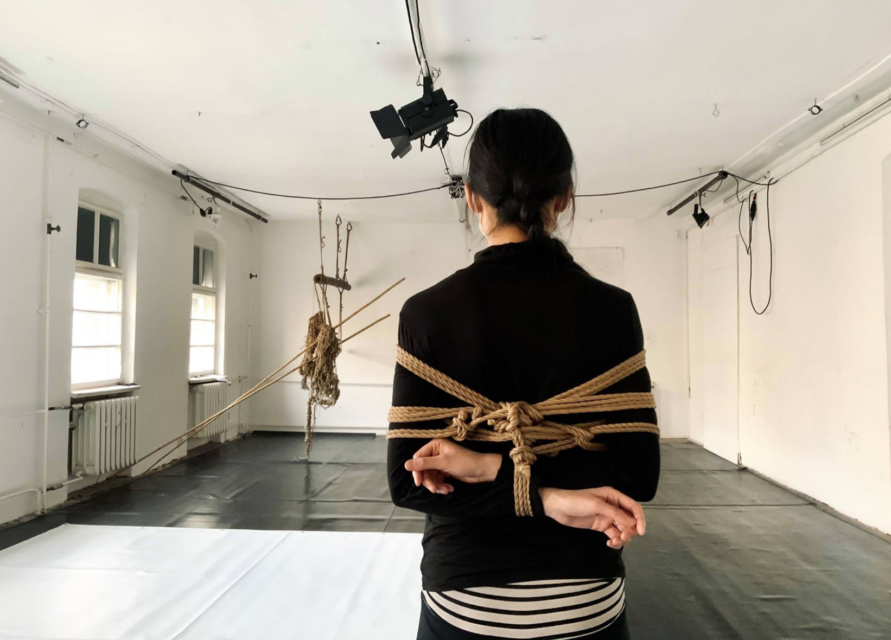
Intuitive Session May

Movement research for Dis-Tanzen-Solo,. With Tara Samaya and Yui Kawaguchi at my Uferhallen atelier in May.
„Gefördert durch die Beauftragte der Bundesregierung für Kultur und Medien im Programm NEUSTART KULTUR, [Hilfsprogramm DIS-TANZEN/ tanz:digital/ DIS-TANZ-START] des Dachverband Tanz Deutschland.“



